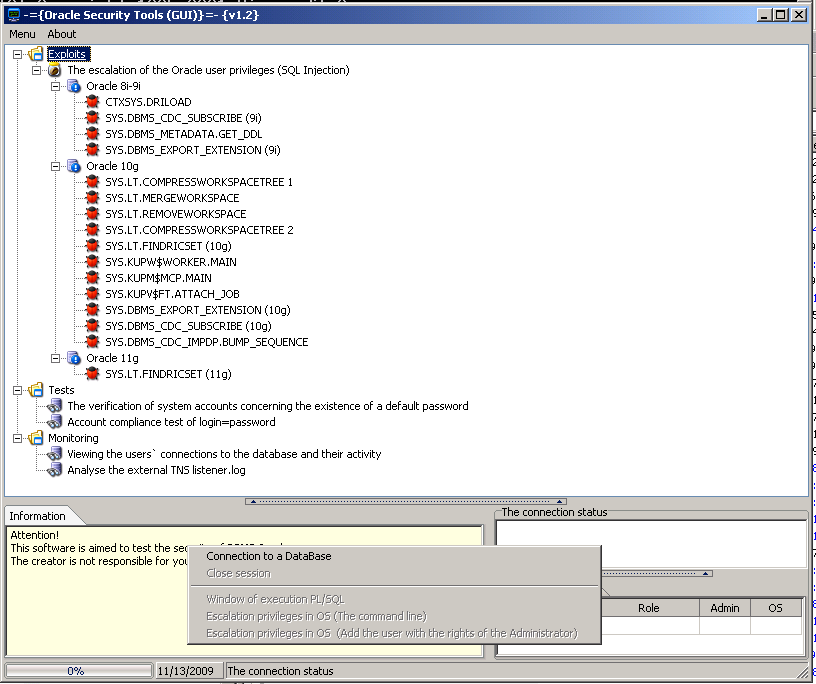This time I want to present a new super-fast password cracker.Ivan Golubev released a new version of his password cracker IGhashGPU. I know the tool for a while but in older versions of IGHASHGPU Oracle SHA1 passwords were not supported.
The new version 0.62 supports now also Oracle 11g hashes (SHA1 + salt). The remarkable thing is the speed of cracking passwords. Ivan’s cracker is using the GPU for cracking the passwords. Without a GPU (NVidia or ATI) or within a virtual machine the tool is not working.
On a dual ATI 5970 configuration (forum entry) the tool can crack approx. 790 (!!!) Million hashes per second. A single ATI 4850 can achieve more than 300 Mill. hashes per second. This means that the new 11g password algorithm can be cracked approx 130 times faster than the old DES algorithm. I am not sure if it was a good idea from Oracle to use such a standard algorithm like SHA1 because this is together with MD5 one of the most optimized algorithms.
Here is a short comparison between cracking old Oracle DES based passwords and new Oracle 11g SHA1 based passwords. I used the fasted software BF password cracker for Oracle DES (Repscan from Red-Database-Security or woraauthbf, both with approx. 6 Mill hashes on a Core i7) and compared it with the configuration of running IGHASHGPU on a dual 5970 configuration (790 Mill hashes per second).
Here are some benchmark numbers. I know that 11g supports case sensitive passwords but from my experience most people use normally lowercase passwords with the first character converted to uppercase.In such a case it is not necessary to crack the entire key space.
26 characters, length 6: DES: 53 seconds, SHA1: 0.4 seconds
26 characters, length 7: DES: 23 min, SHA1: 10 seconds
26 characters, length 8: DES: 10 h, SHA1: 4.6 minutes
26 characters, length 9: DES: 11 days, SHA1: 2 hours
26 characters, length 10: DES: 283 days, SHA1: 2 days
If you are interested to download the tool you can get it from here.
